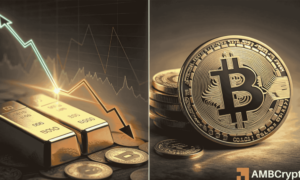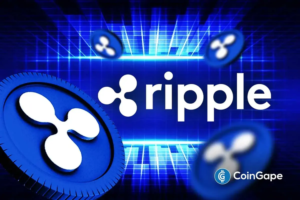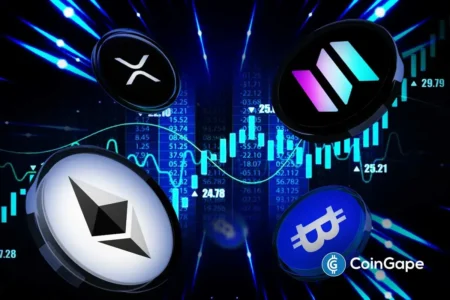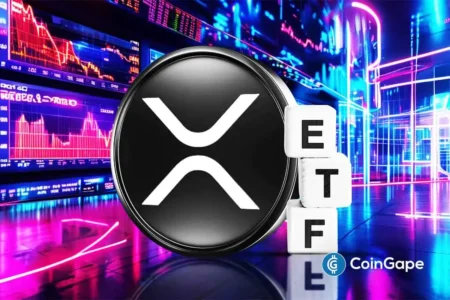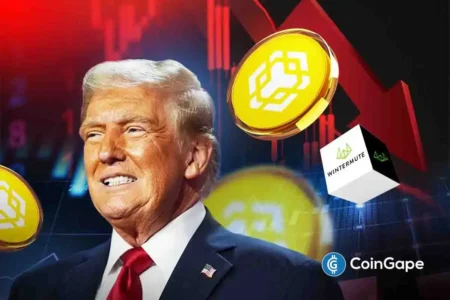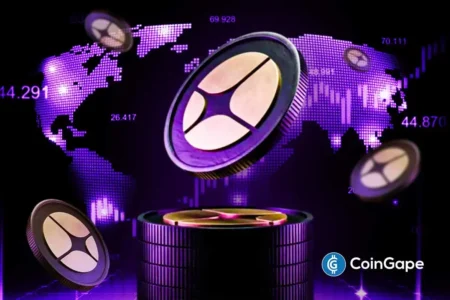Can XRP Restructure Global Debt? Insights from Black Swan Capitalist and Analysts
In the evolving landscape of finance, the intersection of cryptocurrency and traditional banking systems has become a focal point for analysts and investors alike. Recently, Versan Aljarrah, the founder of Black Swan Capitalist, proposed that XRP (Ripple’s digital asset) could play a crucial role in alleviating the global debt crisis. With a staggering global debt of approximately $251 trillion—representing 235% of the global GDP—Aljarrah believes that this debt cannot be repaid under current conditions and must instead be restructured. His vision revolves around tokenization, which could unleash trapped liquidity in a way that benefits both institutional and sovereign finance.
The Role of Tokenization in Restructuring Debt
Aljarrah asserts that the solution to the current debt predicament lies in transforming traditional debt into tokenized liquidity. He posits that trillions of dollars could be converted into blockchain-based assets supported by neutral commodities, such as XRP, gold, and regulated stablecoins. This potential shift could radically revise how debt is viewed and managed within financial markets. He emphasizes, “Trillions in debt will be tokenized… only XRP can unlock the liquidity trapped inside.” This innovative perspective aligns well with the increasing experimentation with tokenization among institutional finance, aiming to streamline cash flow and maximize asset utility.
The groundwork for such a transformation is pertinent, especially against the backdrop of rising sovereign debt ratios across major economies. For instance, the United States and China are grappling with a sovereign debt that stands at 121% and 88% of GDP, respectively. Aljarrah’s views underscore the urgency for viable solutions through technologies like blockchain, which could lead to more efficient settlement systems and ultimately, an economy better equipped to handle its financial burdens.
XRP’s Potential in Future Financial Systems
As discussions around tokenization grow, XRP’s standing as a digital asset gains prominence. Aljarrah’s bullish sentiment towards XRP echoes through various sectors, highlighting its potential to resolve liquidity issues. He recently pointed out the cyclical nature of financial markets, suggesting that preparation for market trends, specifically in cryptocurrency, can yield substantially better results than reacting after the fact. His insights resonate in an era where financial professionals are grappling with complex balance sheets, heavy borrowing, and the need for innovation.
This advocacy for XRP as a transformative asset is not just speculation; it is grounded in the increasing adoption of digital currencies in mainstream finance. As institutions continue to explore blockchain solutions, XRP’s networking capability may serve to bridge gaps between traditional financial mechanisms and new technological frameworks.
Analyst Predictions and XRP’s Price Projections
A separate but equally compelling narrative comes from EGRAG Crypto, a respected analyst who has made projections regarding XRP’s potential price hike. EGRAG predicts that XRP could surge to between $15 and $33 in its next market cycle. His analysis builds on historical patterns, noting that digital assets like XRP tend to form an ascending channel during peak bull markets. Interestingly, past surges—achieving 350% in 2017 and 110% in 2021—suggest that a similar rally may occur beginning late November 2025.
EGRAG emphasizes that long-term investors should focus on cyclical trends and signals, rather than the day-to-day volatility of price movements, which often distract from underlying fundamentals. He points to significant clues during the last phases of past XRP bull runs, indicating that those willing to engage with the asset over time could reap substantial rewards.
Institutional Adoption and Growing Demand for XRP
In alignment with EGRAG’s bullish projections, recent developments in XRP’s ecosystem provide additional optimism. The launch of the REX-Osprey XRP ETF, which attracted $37.7 million in trading volume on its debut day, marks a significant milestone. As the most successful ETF launch of 2025 thus far, this development signals a growing institutional appetite for XRP. The successful introduction of the ETF can lead to increased mainstream recognition and usage of the token.
Moreover, the capabilities of XRP are being enhanced through initiatives such as the Flare Network’s FXRP wrapper, which allows XRP to function as a 1:1 ERC-20 token within decentralized finance (DeFi). This interoperability expands the asset’s utility and showcases a broader acceptance within various financial ecosystems. The rapid locking of over $7.1 million worth of XRP into Flare’s FAssets system shortly after launch indicates strong initial engagement and adoption, strengthening the case for XRP in the future financial landscape.
Conclusion: The Future of XRP as DeFi and Debt Restructuring Hub
The discussions surrounding XRP’s unique potential to address global debt challenges highlight a crucial turning point for both the asset and the broader financial ecosystem. With heavy debts looming over economies, alternatives to traditional financial solutions are becoming increasingly necessary. Versan Aljarrah’s advocacy for tokenization backed by assets like XRP, combined with analysts projecting ambitious price targets, paints a picture of optimism for XRP enthusiasts and investors alike.
As the financial community navigates the intricacies of the global economy, XRP’s role in restructuring debt, facilitating liquid markets, and promoting institutional transitions toward digital assets will likely determine its trajectory in the coming years. Whether through tokenized liquidity solutions or as a foundational digital asset in emerging frameworks, XRP stands at the cusp of redefining financial engagement for a new era.
In summary, XRP may not only be essential for solving the current financial challenges but also act as a catalyst for structural change in how global finance operates, paving the way for a more efficient and equitable financial future.


